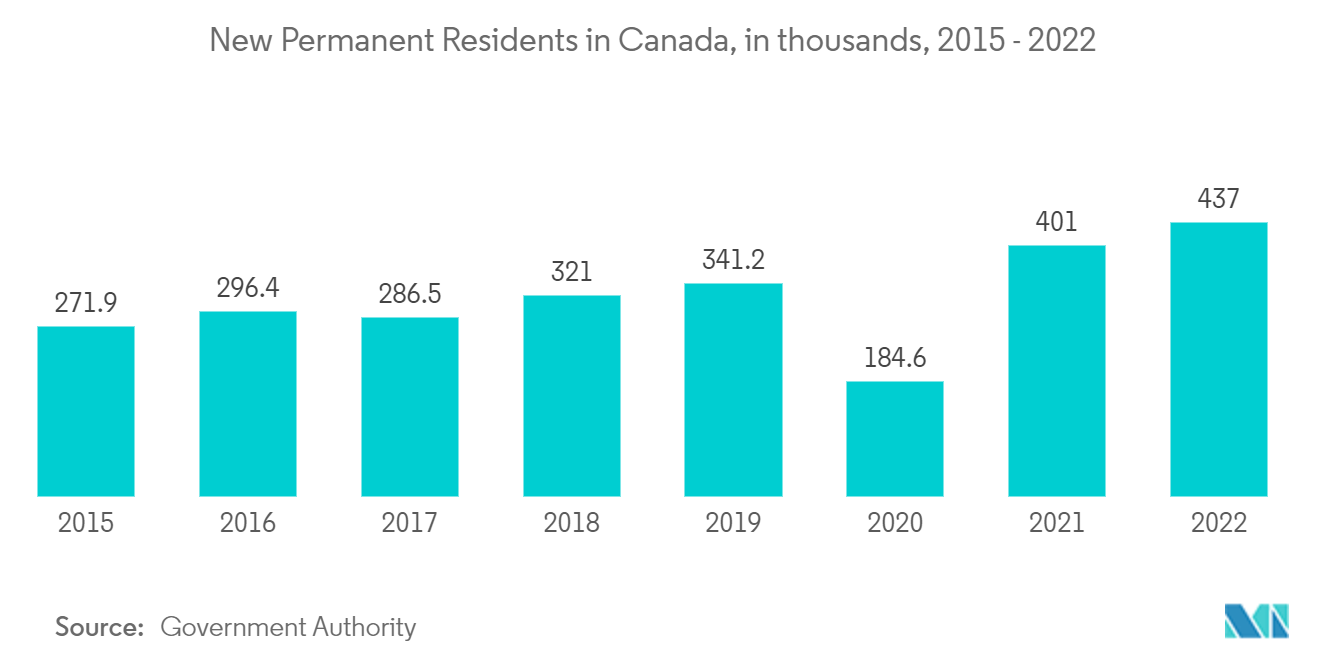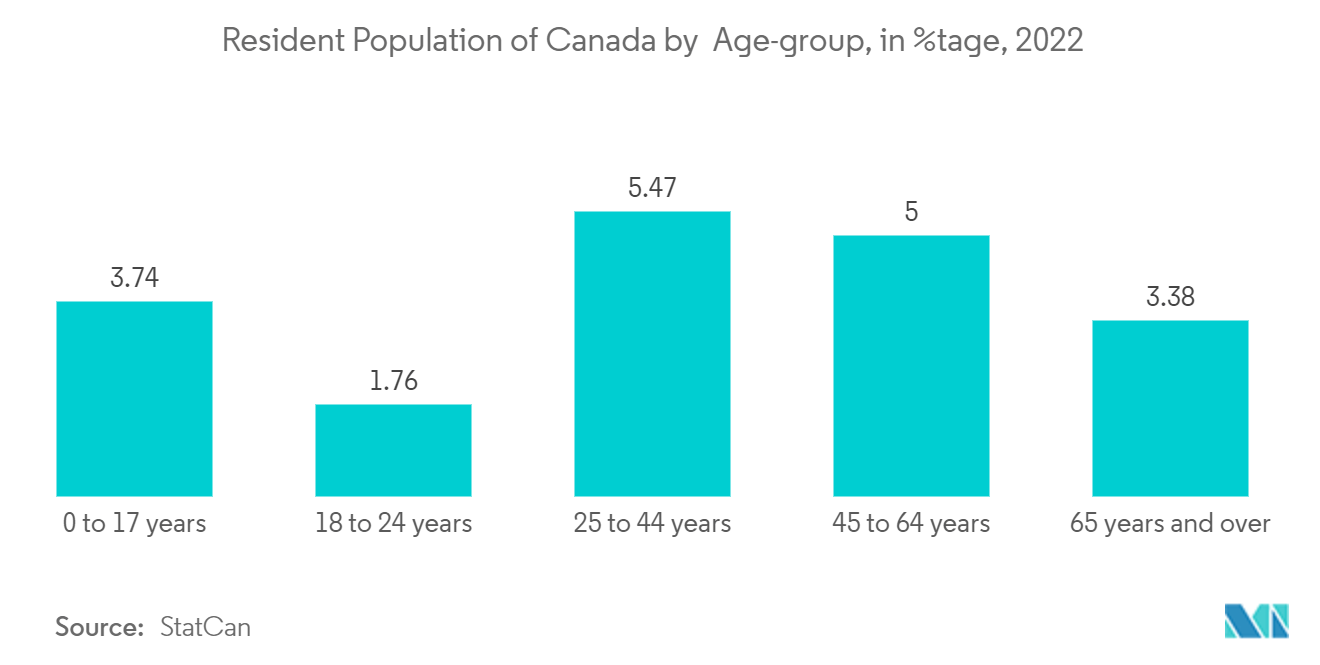Market Trends of Canada Residential Real Estate Industry
Immigration Policies are Driving the Market
Immigration has been a major source of economic growth for Canada's successive governments. With the pandemic forcing aged Canadians to retire early, luring immigrants has become increasingly crucial. In addition, the country focuses on high-skilled immigrants, who are more likely to bring money and earn enough to compete for coveted housing. Low mortgage rates and a scarcity of housing have pushed up housing expenses. Another reason was migration, particularly during the pre-pandemic. Immigrants are more likely to buy in large urban areas, such as greater Toronto and Vancouver, where home prices have risen above CAD 1.12 million (USD 88,000), according to Statistics Canada.
To meet the aim of 411,000 immigrants by 2022, the government is anticipated to attract more immigrants from abroad.
As a result, the number of newcomers who set foot on Canadian territory and begin seeking accommodation is expected to increase. This influx of immigrants will have the greatest influence on the rental market, as newcomers are more likely to rent in their first few years in the nation. The great majority of newcomers are settling in Canada's biggest cities, such as Toronto, Vancouver, and Montreal, adding to the housing shortage.

Demographic Factors are Driving the Market
Young Canadians are delaying starting a family as they stay in school longer, start their careers later and face greater challenges in housing affordability than previous generations. Immigration is on the rise, and newcomers are likely to live in multi-generational homes, but this has not yet fully offset the overall decline in household formation. Over the past decade, there has been an increase of nearly 80,000 multi-generational dwellings, but this represents only about 5% of new household formation. During the same period, one-person households represented 44% of all household formation (approximately 700,000 dwellings).
Households are projected to grow 730,000 year-on-year by 2024, or by 240,000 households per year, compared to 2021. Immigration is at the core of this growth. Ottawa's immigration targets are expected to bring in an all-time high of 1.3M new permanent residents by 2024, which would add 555,000 additional households.
As a result of immigration, Canada's population is growing at a rate that is more than double the rate of the OECD over the last decade. This growth combined with declining household sizes will boost demand for homes (both owned and rented) and serve as a strong counterweight to declining sales and prices, eventually putting a lid on the correction.

